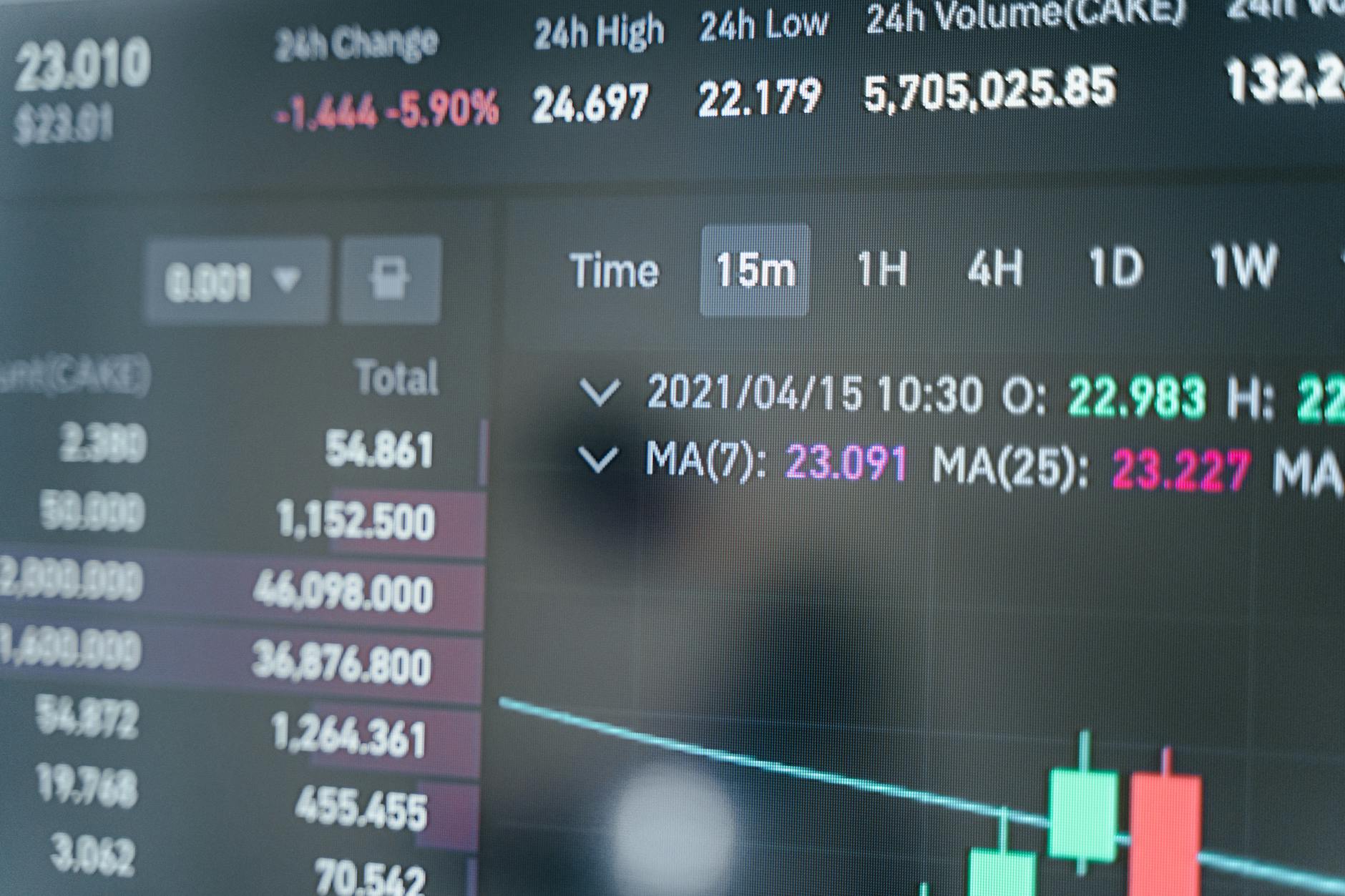As startups and small to medium-sized businesses venture into cloud technology, the integration of blockchain has proven to be a transformative step. The decentralization and security features of blockchain can significantly enhance cloud operations.
At the heart of this technology are blockchain nodes, the vital components that store, spread, and preserve the integrity of blockchain data.
Importance of Blockchain Nodes
Blockchain nodes are essentially the backbone of the blockchain network. They serve as points of communication, storage, and validation of the blockchain’s transaction history.
By hosting a node, you contribute to the network’s robustness and decentralized nature, which in turn, increases the overall security and reliability of the blockchain. Nodes also play a critical role in the consensus process, helping to confirm the legitimacy of transactions.
For businesses, running your own nodes can provide a higher level of control and security over transactions, especially when dealing with sensitive data such as securing customer payment information. Moreover, nodes enable direct access to the blockchain, facilitating faster and more efficient transactions.
Challenges of Securing Blockchain Nodes in Cloud Environments
While the adoption of blockchain nodes in cloud environments offers numerous advantages, it also introduces a set of security challenges:
- Vulnerability to Cyber Attacks: Nodes can become targets for cyber attacks, including Distributed Denial of Service (DDoS) attacks. Protecting against such threats requires robust DDoS protection measures.
- Data Privacy: Ensuring that sensitive data remains private and is not exposed during the transaction or validation process is critical.
- Access Control: The cloud environment must have stringent access controls to prevent unauthorized access to the nodes.
- Compliance Issues: Adhering to regulatory requirements, such as blockchain compliance challenges, can be complex, especially when operating across different jurisdictions.
- Interoperability: Integrating blockchain nodes with existing cloud services and ensuring seamless communication can present technical challenges.
| Challenge | Description |
|---|---|
| Cyber Attacks | Nodes are at risk of attacks like DDoS, requiring strong protective measures. |
| Data Privacy | Sensitive information must be protected during transactions. |
| Access Control | Robust access controls are necessary to secure nodes. |
| Compliance | Adherence to regulatory standards is mandatory and often complex. |
| Interoperability | Seamless integration with existing cloud services is needed. |
To address these challenges, businesses must adopt a comprehensive strategy encompassing cloud security training, developing a security awareness culture, and applying best practices in cloud security architecture. Additionally, conducting cloud security risk assessments and identifying vulnerabilities are critical steps in mitigating cloud security risks.
For expert guidance, businesses may consider partnering with a cloud security consultant to benefit from cloud security consulting benefits and assistance in implementing consultant recommendations.
Securing your blockchain nodes in the cloud is a complex but essential task. With the right strategies in place, you can ensure that your business leverages the power of blockchain efficiently and securely.
How to Secure Blockchain Nodes
Securing blockchain nodes is a critical concern for startups and medium-sized businesses that leverage cloud environments. Implementing robust security measures is essential to protect against unauthorized access and to safeguard sensitive data. Here are some best practices to help you fortify your blockchain nodes in the cloud.
Implementing Secure Access Controls
To protect your blockchain nodes, it’s essential to establish secure access controls. This begins with setting up strong authentication mechanisms to ensure that only authorized personnel can access the node. You may want to consider multi-factor authentication (MFA) to add an extra layer of security.
| Access Control Feature | Description |
|---|---|
| User Access Management | Limit access to blockchain nodes based on user roles and responsibilities. |
| Multi-Factor Authentication | Require multiple forms of verification before granting access. |
| Access Logs | Maintain detailed records of who accesses the node and when. |
In addition to authentication, you should also implement authorization protocols to define what actions each user can perform once they have access to the node. Establishing permissions based on the principle of least privilege ensures that individuals only have access to the data and actions necessary for their role.
Furthermore, it’s important to maintain an awareness culture within your organization. Regular cloud security training can help your team identify and respond to security threats more effectively.
Encrypting Data and Communication Channels
Encrypting data both at rest and in transit is a non-negotiable practice when it comes to securing your blockchain nodes. Encryption helps to protect the integrity of your data and prevents unauthorized access or interception by malicious actors.
| Encryption Type | Purpose |
|---|---|
| Data-at-Rest Encryption | Encrypts stored data to prevent unauthorized access if the storage medium is compromised. |
| Data-in-Transit Encryption | Secures data as it travels across networks to prevent interception or tampering. |
For data-at-rest encryption, consider using advanced encryption methods detailed in our encryption methods article. For data in transit, you should implement secure communication protocols such as TLS (Transport Layer Security) to ensure that data cannot be intercepted when moving between nodes or when accessing the node remotely.
It’s also wise to utilize VPNs (Virtual Private Networks) for remote access security, creating secure, encrypted channels for your team to access the blockchain nodes from any location.
Should you need expert advice, don’t hesitate to consult with a cloud security consultant and consider implementing consultant recommendations for improved security measures.
Monitoring and Auditing Blockchain Nodes
Maintaining robust security for blockchain nodes is critical, especially when these nodes are hosted in cloud environments. Continuous monitoring and regular auditing are vital practices in ensuring the security of blockchain nodes.
Continuous Monitoring for Anomalies
Continuous monitoring is your first line of defense against potential security threats to blockchain nodes. By keeping a vigilant eye on your systems, you can detect and respond to anomalies and unusual activities in real time. This proactive approach allows you to address threats before they escalate into more significant issues.
Implementing a comprehensive monitoring system involves tracking various indicators of compromise (IoCs) and setting up alerts for abnormal patterns that could indicate a security breach. These indicators can include unusual network traffic, sudden changes in file integrity, and unexpected modifications to blockchain node configurations.
Here are some key aspects of continuous monitoring:
- Network Traffic Analysis: Regularly scrutinize inbound and outbound traffic to identify patterns that deviate from the norm, which could signify a DDoS attack or other malicious activities.
- System Performance Metrics: Monitor metrics such as CPU and memory usage, which could indicate a node is under stress or compromised.
- Access Logs Review: Keep an eye on access logs to ensure only authorized users are accessing the blockchain nodes.
| Indicator | Normal Activity | Suspicious Activity |
|---|---|---|
| Network Traffic | Consistent with baseline | Sudden spikes or unusual sources |
| CPU Usage | Stable and predictable | High usage with no clear cause |
| Access Patterns | Regular, expected access | Irregular, unexpected access timings |
In addition to setting up monitoring systems, it’s crucial to have personnel trained in cloud security who can interpret the data and take appropriate action. Cultivating a security awareness culture within your organization is also key to ensuring that all team members are vigilant and proactive in monitoring efforts.
Regular Auditing of Security Measures
While continuous monitoring offers real-time insights into the security posture of your blockchain nodes, regular auditing provides a structured approach to assess and improve security measures. An audit is a systematic evaluation of security controls and procedures to ensure they are effective and comply with any regulatory requirements.
Conducting regular audits involves:
- Vulnerability Assessments: Periodically scan your blockchain nodes and related cloud infrastructure to identify vulnerabilities. Once identified, prioritize and remediate these risks in a timely manner.
- Security Policy Compliance: Verify that security policies are up to date and in alignment with industry standards and regulations. This includes reviewing your cloud security policy development and ensuring that cloud security policies are enforced.
- Security Control Effectiveness: Evaluate the effectiveness of implemented security controls, such as firewalls, intrusion detection systems, and access control mechanisms.
Regular audits not only help you maintain compliance with industry standards but also provide an opportunity to improve your security posture by identifying and remediating any shortcomings.
To conduct these audits, consider working with a cloud security consultant who can bring expertise and an objective perspective to the process. They can offer cloud security consulting benefits and assist in implementing consultant recommendations.
By combining continuous monitoring with regular audits, you create a responsive and resilient security environment for your blockchain nodes. This dual approach ensures not only the detection of threats but also the ongoing improvement and strengthening of your security measures.
Disaster Recovery and Backup Strategies for Blockchain Nodes
Ensuring the security and continuity of blockchain nodes in cloud environments is crucial, especially when you consider the potential risks of data loss or system downtime. By establishing robust disaster recovery and backup plans, you can protect your blockchain infrastructure against unforeseen events.
Creating Backup Plans
A comprehensive backup plan is your first line of defense in preserving the integrity and availability of your blockchain nodes. Here’s how you can approach this:
- Data Backups: Regularly schedule and automate the backup of your blockchain data. This includes the ledger, smart contracts, and any associated databases.
- Frequency: Determine the frequency of backups based on the transaction volume and criticality of the data. High-frequency backups may be necessary for active blockchain nodes with constant updates.
- Storage: Store backups in multiple geographically dispersed locations to mitigate risks associated with physical damage at a single site.
- Testing: Periodically test your backups to ensure data integrity and the effectiveness of the restoration process.
- Versioning: Keep multiple versions of backups to protect against data corruption and to provide a range of recovery points.
- Documentation: Document your backup procedures and protocols to ensure consistency and clarity in the backup process.
- Compliance: Ensure that your backup plan complies with relevant regulations and industry standards, such as those concerning cryptocurrency wallet protection and blockchain compliance challenges.
By adhering to these guidelines, your backup strategy will enhance your blockchain nodes’ security and provide a solid foundation for disaster recovery efforts.
Implementing Disaster Recovery Protocols
Disaster recovery protocols are your roadmap to restoring normal operations following an incident. Here are key steps to implement:
- Assessment: Regularly perform a cloud security risk assessment to identify potential threats and vulnerabilities that could impact your blockchain nodes.
- Planning: Develop a disaster recovery plan that outlines the steps to be taken in the event of a system compromise or failure.
- Redundancy: Establish redundant systems and nodes to ensure continuous operation even if one node goes down.
- Automation: Utilize automated security scans and security automation tools to swiftly detect and respond to threats.
- Communication: Create a communication protocol that includes notifying stakeholders and executing a predefined response in the wake of a disaster.
- Training: Provide cloud security training to your team to ensure they understand their roles in the recovery process and promote a security awareness culture.
- Review: Continuously review and update your disaster recovery plan to align with new threats, technological advancements, and organizational changes.
Having a well-defined and regularly updated disaster recovery protocol will not only safeguard your blockchain nodes but also reinforce trust among users and stakeholders by demonstrating a commitment to resilience and security.




Thank you for your sharing. I am worried that I lack creative ideas. It is your article that makes me full of hope. Thank you. But, I have a question, can you help me?
Your article helped me a lot, is there any more related content? Thanks!